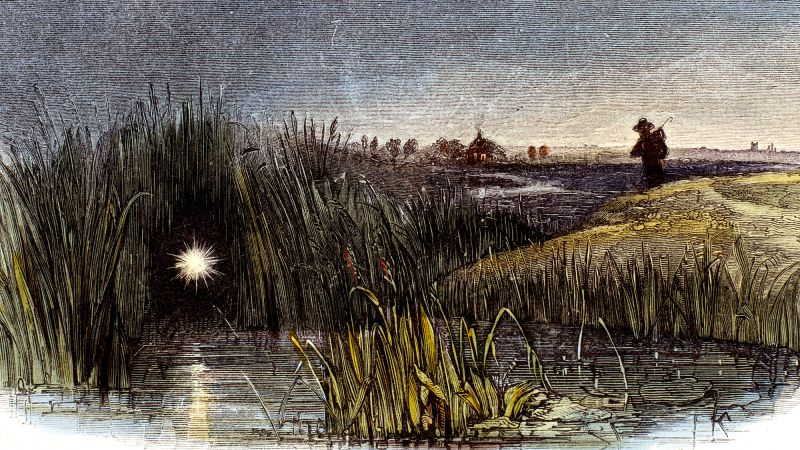Unveiling the Mystery of Will-o’-the-Wisps: The Science Behind the Lights
‘Microlightning’ may spark glowing will-o’-the-wisps, study finds | CNN 🔗

New research provides a scientific explanation for the mysterious phenomenon of will-o’-the-wisps, traditionally thought to be ghostly lights. Scientists suggest that these flickering blue flames, often seen over marshes, are created by "microlightning" that occurs between tiny, electrically charged bubbles of methane. When these bubbles react with oxygen, they produce a blue-violet glow. The study, led by Dr. Richard Zare, utilized high-speed cameras to capture the microlightning process, challenging previous myths about the lights' origins. While the research shows promise for understanding and utilizing microlightning, further studies are needed to see if the phenomenon can occur in natural swamp conditions and how it might be applied in chemical processes to reduce greenhouse gas emissions.
- Will-o’-the-wisps are linked to tiny flashes of lightning igniting methane bubbles.
- Microlightning can create chemical reactions at room temperature without external electricity.
- Further research is needed to understand the phenomenon's occurrence in natural swamp environments.
What causes will-o’-the-wisps?
Will-o’-the-wisps are caused by microlightning igniting methane bubbles in marshy areas, producing a blue-violet glow.
How does microlightning work?
Microlightning occurs when charged bubbles of methane come together, generating sparks that cause chemical reactions and produce light.
Can microlightning be used in chemical processes?
Yes, harnessing microlightning may lead to more sustainable chemical reactions, including those that could help reduce atmospheric methane levels.